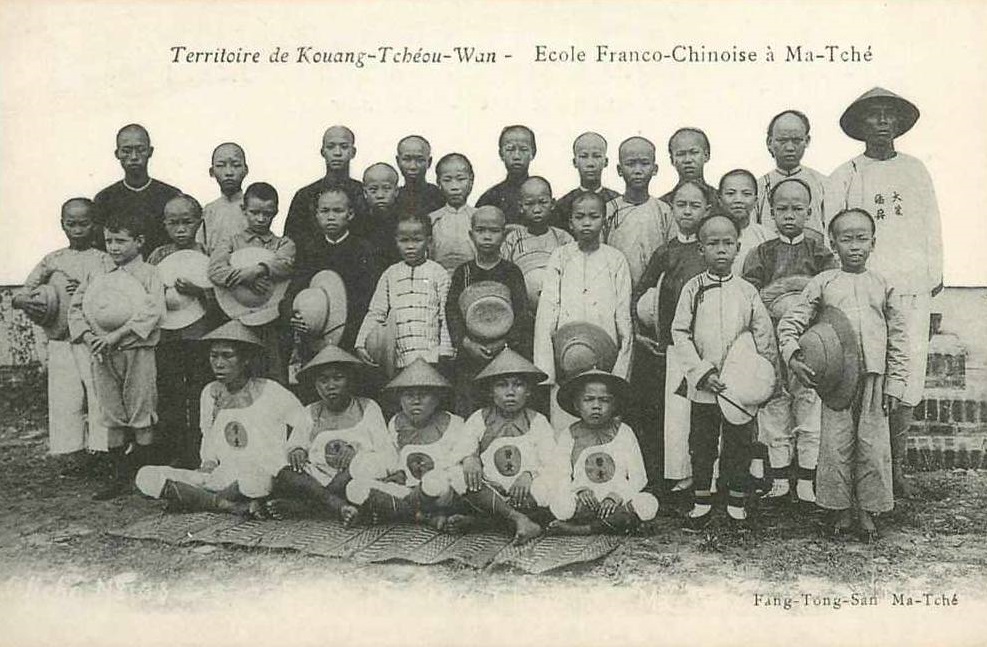Maxie: Early capital of Kwangchow Wan territory

Pupils and teachers of the French-Chinese School at Fort-Bayard of Kwangchow Wan.
After Kwangchow Wan was leased to France, its urban construction mostly focused on Fort-Bayard, the city on the western shores of Kwangchow Wan and the commercial port Chikan, over a dozen kilometers from northern Fort-Bayard. This laid the foundation of today’s urban landscape of Zhanjiang, Guangdong Province. However, in earlier times, the French focused on building Maxie, the city on the bay’s eastern shore.
A vital hub and ferry for coastal defense, Maxie was selected as the capital of the concession inland and named Pointe-Nivet at that time.
Upon their early arrival in the territory, the French established the Governor Council for colonial administration and opened training classes for French language learning in Maxie. In addition, attempts at commerce were also made there, while Fort-Bayard became the military base. At first, the urban construction of Maxie achieved substantial results. The British journalist Alfred Cunningham praised Maxie for its outstanding and rational distribution as well as the urban layout of residences and businesses.
Unlike Chikan, a city located deep in the bay, giving it favorable port conditions and advantageous links to the hinterland, the cape of Maxie was susceptible to natural disasters, like typhoons. This state of affairs hindered French commercial ventures in the area.
In fact, French administrators hesitated to commit to developing Kwangchow Wan. Paul Doumer, the governor–general of French Indochina from 1897 to 1902, vigorously supported commercial and military development in Kwangchow Wan, suggesting it would have a bright future as a port. However, distracted by its conflicts with Britain in Asia and changes of its domestic political situation, France shelved its military plan for Kwangchow Wan.
Besides, Maxie construction projects involving land expropriation and other large-scale construction under French control also met with resistance from locals. In 1902, serious conflicts broke out motivated by the land expropriation issue. Locked in a stalemate, France decided to give up Maxie as the capital and moved its administrative center to Fort-Bayard in 1912.
The French administrative and military strength in Kwangchow Wan was actually limited to less than a thousand office holders and soldiers. To make up for its power vacuum in the vast countryside of the leased territory, the French established the Public Bureau system for local security, which was run by local Chinese leaders who were given such titles as director-general. In addition, the Public Bureau was also responsible for social affairs, like taxation and dispute resolution. Altogether, at least 15 Public Bureaus were set up and were scattered throughout the key areas of the Kwangchow Wan territory.
In general, due to the limitations of geographical environment and natural resources, Maxie was not an ideal place to construct a capital. The French failure and frustration in Maxie was also directly caused by its conflict with locals. But thanks to its position as the important hub in Kwangchow Wan, Maxie still played a crucial role in the territory.
Wu Ziqi is from the Cui Yongyuan Research Center of Oral History at Communication University of China.
